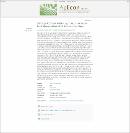| dc.description.abstract | Soil organic carbon (C) and nitrogen (N) decomposition in fecal manure of cattle fed browses of Calliandra (Calliandra calothyrsus), Gliricidia (Gliricidia sepium) and Leucaena (Leucaena leucocephala) browse/maize silage mixtures and maize (Zea mays) silage alone when applied to the soil were investigated in a pot experiment in comparison to the corresponding silages fed. Maize silage alone had the lowest N and a larger C: N ratio, making it a poor quality compost when applied to the soil, but compared to the browse/maize silage mixtures it had the highest level of soluble N as non-protein nitrogen (NPN) which makes much of its N available for soil microbial decomposition of its organic C. Calliandra browse/maize silage mixture had the highest level of fiber-bound N (ADFN), which reduces N availability for soil microbial decomposition of its organic C in spite of its high N content and a narrower C: N ratio. Fecal manure from maize silage alone had a lower level of N and a wider C: N ratio than fecal manure from the other silages fed which would affect its decomposition in the soil, but it had the lowest level of ADFN and much of its N is made available for soil microbial decomposition of its organic C. Soil samples after 12 weeks of the experiment showed that Calliandra browse/maize silage mixture maintained the highest level of C in the soil, while maize silage alone maintained the lowest level. Also soils treated with fecal manure from the other browse/maize silage mixtures maintained higher levels of C than fecal manure from maize silage alone. Organic C levels were lowest at 8 weeks of the experiment for all treatments and rose to the original levels at 12 weeks which could have been as a result of biotic and hydrologic factors coupled with soil aggregation. Decomposition of organic N followed a similar trend as organic C. The two elements are linked in both plant inputs in the soil and in the eventual soil humic substances. The soils treated with browse/maize silage mixtures maintained C: N ratios that were similar to that of the control soil and higher than those of the fecal manure treatments. Thus, in spite of the added silage materials to the soil, rapid decomposition of organic C could not occur to reflect benefits of adding the silage materials to the soil. Thus, fecal manure, particularly from feeding animals on browse/forage diets is more beneficial in the soil as it would decompose more readily releasing the plant nutrients they contain. | en_US |

